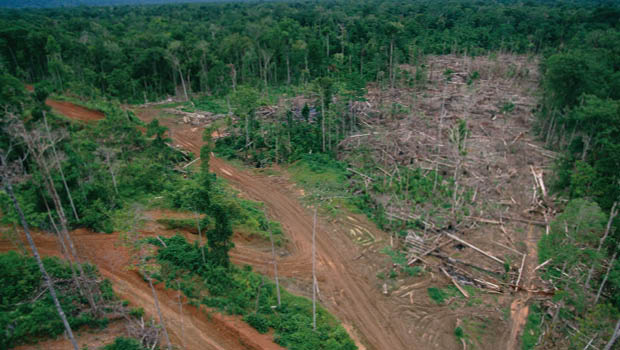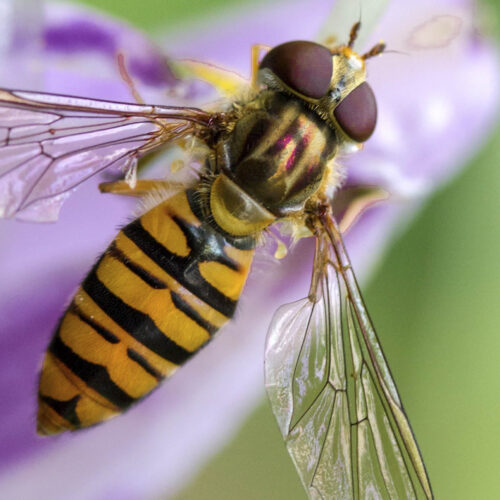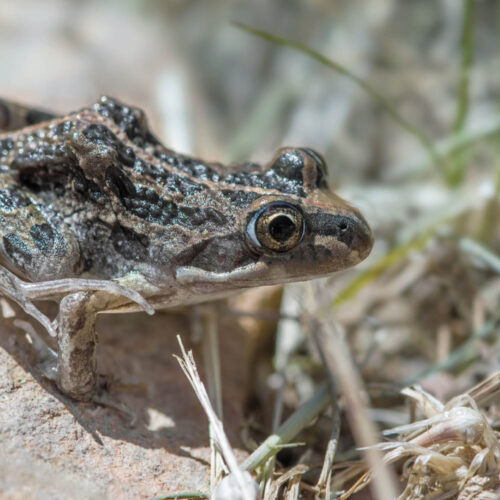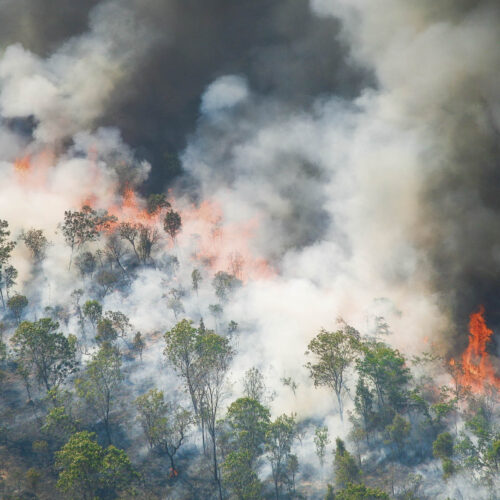Our life-giving forests
2021-06-02T05:27:36+10:00
Environmental activist and nature defender Dr Reese Halter celebrates the carbon-storing, rain-creating and simple majesty of trees, while calling for immediate action to protect them and humanity’s future.
There are more than 60,000 species of trees on Earth, including massive forest communities of these dripping, breathing, architectural tours de force that enthral us and ensure our survival. Collectively, forests have been enriching Earth since the mid Devonian Period, around 400 million years ago.
Quite simply, they are the most successful CO2 warehouses to have ever evolved on land. For every tonne of wood created, the tree inhaled 1.5 tonnes of CO2 and exhaled one tonne of oxygen. As ancient trees age they get better at stockpiling carbon. An estimated 70 per cent of all carbon stored in some trees accumulated in the last half of their lives, and 40 per cent for some in their last quarter.
Where there are rainforests it’s wet. They create vast atmospheric rivers of moisture that circulate the globe. They are local, regional, continental and inter-continental climate-makers and gigantic air conditioners. Forest leaves release aromatic compounds called terpenes that react with the air to form tiny aerosols. The aerosols transform atmospheric water vapour into clouds – those particles can double the thickness of clouds 1000m above forests, reflecting an extra 5 per cent of sunlight back into space.
Old-growth forests
Around 6000 years ago, old-growth rainforests with unique genetics, structural diversity, a rich array of biodiversity, and the extraordinary ability to perpetuate tree life, beautified about half of Earth’s land masses. Today, a slim fraction of those native rainforests remain, yet, that’s where 1 per cent of the trees, the giants, hold an astonishing 50 per cent of all the earthly above-ground carbon.
Old-growth rainforests are biodiversity hotspots, accounting for 80 per cent of all land-based species. Maintaining their presence is vital because as the human population continues to multiply and encroach upon wildlife habitat, the risk from animal viruses resulting in pandemics will also increase.
Another little-known fact is that 90 per cent of all cities depend upon forested watersheds for their water supply. Furthermore, forests are the lungs of the land: one of every three breaths of oxygen we draw come from them.
Too hot, too dry
Despite all these amazing roles that forests play, some humans are still bent on destroying them. In 2020, while there was less travel and some pressure taken off the planet due to the COVID-19 pandemic, razing the world’s old-growth forests surged.
Rumbling bulldozers and whining chainsaws annihilated an area of primary forests almost two-thirds the size of Tasmania. That’s a 12 per cent increase over 2019. The biggest losses were incurred in Brazil, three times that of the second worst offender, the Democratic Republic of Congo.
This year, 2021, may be even worse. One million hectares of exquisite Papua New Guinean rainforests are being swapped for more monoculture palm oil and rubber plantations, soybeans for livestock feed and the burgeoning $50 billion wood pellet biomass power industry.
By the way, the oceans drive Earth’s climate and 2020 was a record for ocean heat. Elevated temperatures, prolonged heatwaves and droughts are laying waste to robust forests. Weakened
water-starved trees are incapable of fending off insect epidemics as evidenced by 35 billion bark beetle-killed trees across western North America.
Meanwhile, in Australia, snow gum forests attract and hold snowfall, and slowly release springtime meltwater, contributing to the Murray–Darling Basin supply of freshwater. Heatwaves and repeated bushfires this century have decimated these high-country gums, while University of Canberra scientists predict that more heat could shrink the habitat of 90 per cent of all eucalypts by 50 per cent. Too hot. Too dry.
Fighting back
Along with logging and land clearing, global heating is the biggest threat to forests, and as we well know, fossil fuels are a big contributor to that crisis. The extent of the world’s annual direct and indirect fossil fuel subsidies – an estimated $5.3 trillion – has been laid bare in recent years. Instead of propping up fossil fuel industries, there are increasing calls for no new investment in this energy source at all.
Just in May, the world’s leading energy organisation, the International Energy Agency (IEA), said the development of new oil and gas fields must stop this year, as well as no new coal-fired power stations built, if we want to limit the worst effects of climate change.
Instead, we need investment funnelled into carbon-reducing strategies such as the new £30m project funded by UK Research and Innovation looking for the best ways to draw carbon dioxide from the atmosphere. The research will include re-wetting degraded peatlands, testing biochar and ways to maximise the role of trees.
In the meantime, protection of the forests and trees we have is vital and inexpensive. All the old-growth forests (boreal or taiga, temperate, tropical) require immediate protection from logging and poachers. The International Criminal Police Organisation (INTERPOL) estimates that USD$100 billion per annum of timber is illegally harvested, smuggled across the sea and sold on the black market. (This is why it is vital individuals and businesses buy and use only sustainably sourced timber and wood).
Another urgent measure would be for the United Nations (UN) to finally adopt the Universal Declaration of the Rights of Mother Earth of 2010, put forth by the World Peoples’ Conference on Climate Change and Rights of the Mother Earth in Cochabamba, Bolivia.
The US-based Earth Law Center is fighting tooth and nail to get this much-needed universal declaration for nature adopted by the UN. There’s both urgency and optimism. If corporations have rights, why shouldn’t nature, globally?
People power
In their 2011 book Why Civil Resistance Works, Harvard University professor, Erica Chenoweth, and American political scientist, Maria Stephan, explain how non-violent mass civil disobedience is a potent weapon that forces societal change.
Chenoweth and Stephan found that 3.5 per cent of an active population could force societal change. That means we need about 273 million people from all corners of the world doggedly demanding both climate and extinction justice.
It may seem like a large number but when the Indigenous Peoples, vegans, environmentalists, conservationists, scientists, teachers, concerned citizens and youth band together, we have the numbers in spades!
According to American environmentalist Bill McKibben: “Very few people on Earth ever get to say: ‘I am doing, right now, the most important thing I could possibly be doing.’ If you’ll join this fight that’s what you’ll get to say.”
Good projects
Speaking of people power, every project and initiative to protect or plant trees counts. Melbourne is fighting the climate emergency by expanding and maintaining its splendid urban trees.
Urban forests are vital to absorb air pollution and storm water runoff, but also to cast shade and lower air temperatures; cities can be up to 12°C warmer at night compared to the surrounding countryside.
Melbourne is planting many thousands of new trees, including a wide array of species, which will double the sea of green in the city from 20 to 40 per cent. By 2040, this urban green canopy intends to lower the Melbourne’s summertime temperature by 4°C.
Seventeen thousand kilometres to the northwest of Melbourne, work is being done to rewild the now barren Scottish highlands.
“Ninety-eight per cent of the original native pinewoods are gone,” said the founder of Trees for Life, Alan Watson Featherstone.
Since 1986, Featherston’s foundation has been rewilding Scotland’s Caledonian temperate rainforest. Thousands of volunteers have helped protect many of the remnant areas from overgrazing by deer and sheep with fenced enclosures.
Trees for Life have planted a couple of million trees and they’re planning to plant millions more. About 140 red squirrels have also been successfully reintroduced to the countryside. These furry native friends plant new trees by forgetting where they buried their winter stores of nuts and seeds! Trees such as Scots pine, birch, rowan, juniper and aspen are now drawing carbon out of the atmosphere as a result and will be the old growth forests of the future.
The kingdom of Bhutan is a shining example of promoting forests via reforestation. The country measures its success with a citizen’s wellbeing index that values forests and the environment as one of the main pillars. Nearly 75 per cent of Bhutan is forest.
The fate of humankind is inextricably linked to protecting existing old-growth forests, but also in planting trillions of trees that may one day be our saviours.
REFERENCES
The following references will help you understand the history and urgency of this important resource:
- James Lutz et al, 2018. Global Importance of Large Diameter-Trees. Global Ecology and Biogeography. https://onlinelibrary.wiley.com/doi/abs/10.1111/geb.12747
- Food and Agriculture Organisation of the United Nations, 2020. Forest and Water Programme. http://www.fao.org/in-action/forest-and-water-programme/en/
- Deutsche Welle, 2021. Global Rainforest Destruction Saw a Surge in 2020, Study Finds. https://www.dw.com/en/global-rainforest-destruction-saw-a-surge-in-2020-study-finds/a-57057241
- Hans Nicholas Yong, 2021. A Million Hectares of Papuan Forest Licensed for Clearing, Report Shows. https://www.asia-pacificresearch.com/million-hectares-papuan-forest-licensed-clearing-report-shows/5629987
- Australian Academy of Science, 2021. The Risk to Australia to a 3C Warmer World. https://www.science.org.au/news-and-events/news-and-media-releases/risks-australia-warmer-world
- U.S. Environmental Protection Agency, 2005. Reducing Urban Heat Islands: Compendium of Strategies. https://www.epa.gov/sites/production/files/2014-06/documents/basicscompendium.pdf
- The Australia Institute, 2020. The Opportunity for Australia’s Native Forests. https://australiainstitute.org.au/wp-content/uploads/2020/12/P879-Forests-Open-Letter-Supplementary-Brief-Web_0.pdf
- Rainforest Action Network, 2014. The Truth Behind Tasmanian Forest Destruction and the Japanese Paper Industry. https://www.ran.org/wp-content/uploads/2018/06/ran_thetruthbehindtasmanianforestdestruction_final.pdf
- Duncan Brack, 2017. Wood Is Not a Carbon-Neutral Energy Source. https://www.chathamhouse.org/2017/03/wood-not-carbon-neutral-energy-source
- Rainforest Information Centre, 2020. Australian Grown Plantation Timber Species. https://www.rainforestinfo.org.au/good_wood/oz_pln.htm
You can also find out more from these organisations:
Australian Conservation Foundation






